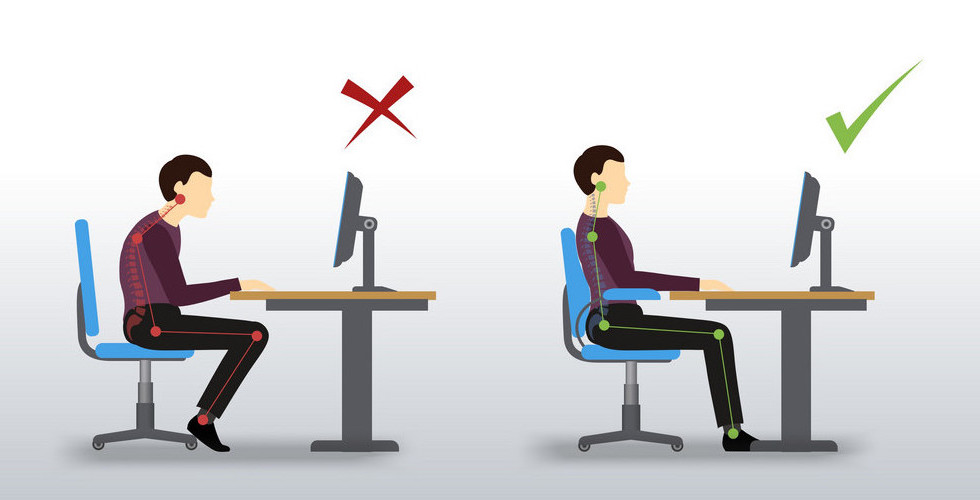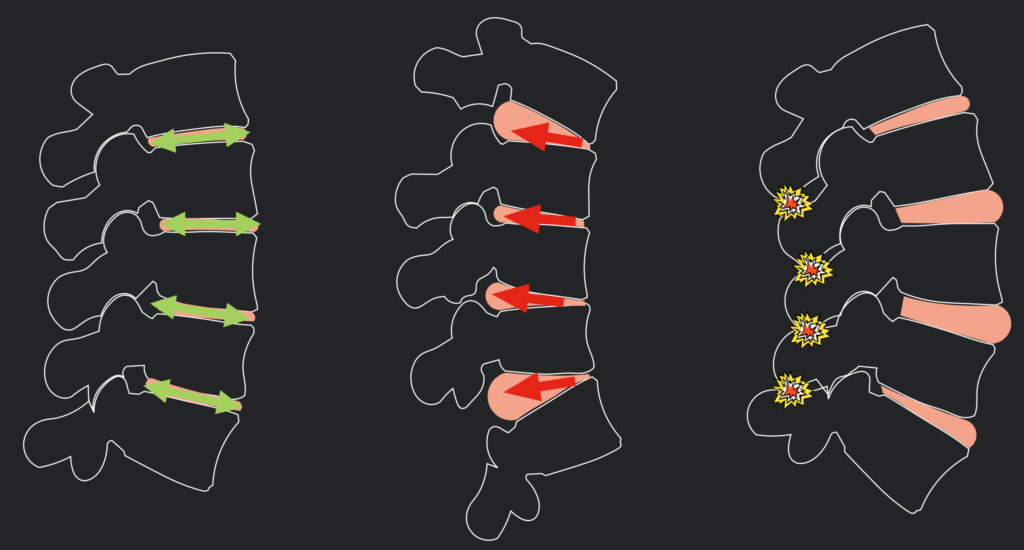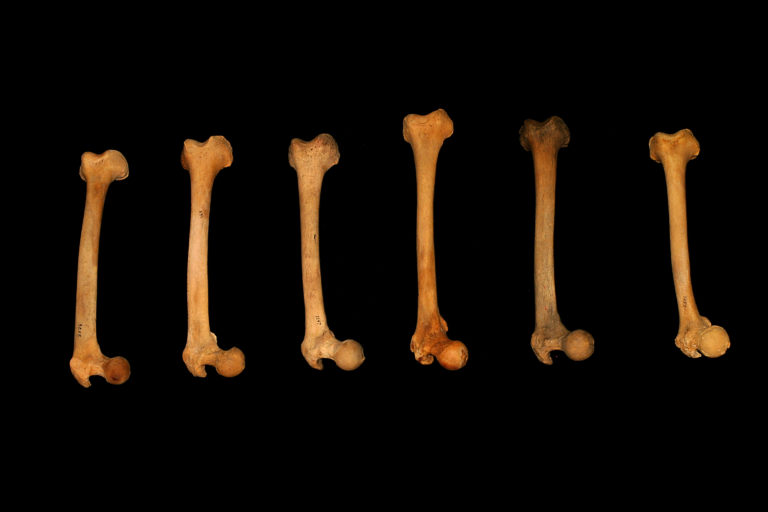
You have probably been asked to sit straight in your lifetime enough times to immediately think that the left and right workers in the photo above are doing it wrong, without even questioning the reason why you thought so. Advice on sitting straight and avoiding slouching have become so mainstream that there are now pages on Instagram that are created for the sole purpose of telling people to stop slouching.

These advices are outdated and they lack context. The body of scientific evidence that is now present shows that it is not just the way you sit that matters, but more so the time that you spend in one position. This means that if we take another look at the first image, we cannot draw accurate conclusions on who is sitting right or wrong, because we don’t know how much time each person is going to spend in the captured position.
Where did the theory of having only one correct posture originate from?
To understand why sitting posture should not be your primary ergonomic concern, it’s important to understand the origin of the claim we’re trying to challenge.
From a theoretical and anatomical standpoint, the spine is designed in an “S” shape which provides a better distribution of axial or vertical forces acting on it compared to having the vertebrae stacked on top of one another like Jenga™ bricks. This means that any deviation away from that neutral position would interfere with the amount of force being exerted on each vertebra. The figures below represent how different postures may affect the spine and the discs between them that can bulge or become herniated; creating lower back pain that can be severe and disabling.

What does the science say?
While the theory mentioned above makes perfect sense, it misses out on one key factor: the human element. The actual evidence that support the mentioned theory are mostly based on cadavers and in-vitro studies, which means that they weren’t performed on living humans (1,2). However, when reviewing the scientific articles that went the extra mile and assessed the relationship between posture and pain (specifically neck and lower back pain), the theory that posture alone can cause pain got debunked (3,4).
The natural question that may occur to you now is: how could such a logical theory be wrong or inaccurate?
The answer is multi-factorial but can be summarized in the following reasons:
Humans are adaptable
One of the key features of the human body is that when it’s placed under a low level of stress that is repeated gradually and progressively, it can adapt and overcome this stress without necessarily creating pain. The images below are proof on how much the human body can perform extraordinary things when following a simple principle of gradual and progressive overload.



Human skeletons are designed differently, so there is no one size fits all when it comes to recommending a certain posture
The actual human skeleton can be different in shape than the illustrated skeleton that can be seen in medical textbooks. People are built differently, and genetics play a significant role in how our bones look. Therefore, it would be a reductionist standpoint to say that everyone should sit or stand the same way. It should be understood that there is no black or white way to define a proper posture or skeletal alignment. This concept is also proven by scientific evidence which proved that different sitting postures do not necessarily induce pain (5). The figure below can provide you a visual context on how different people have different shapes of bones, where the bone represented is that of the thigh (femur).

Forcing yourself to sit or stand in one specific posture can induce more discomfort and pain than being comfortable in a theoretical “suboptimal” posture
This is one of the main reasons why asking people to sit straight won’t do the trick. When you attempt to sit straight, the muscles at the back of your spine are forced to contract to maintain this posture. It only takes a few minutes before these muscles fatigue and you find yourself slouching again. You may think that this is due to a weakness in your back muscles and that if you repeat attempting this contraction as an exercise, you will build more endurance so that in the future you can sit straight for hours. Unfortunately, this doesn’t apply in reality because you cannot simply train your muscles to hold a single contraction for several hours. Moreover, it has been scientifically proven that forcing yourself to sit in unnatural postures can be more painful than being comfortable in your resting posture (6,7).
The time spent in any posture is more important than the shape of the posture
Time spent sitting is one of the most overlooked elements in the tips and advices that are propagated on social media and even through physicians and physical therapists. Scientific studies have repeatedly and consistently shown that sitting for prolonged times of more than 1.5 hours without taking breaks can lead on the long term to musculoskeletal and cardiorespiratory diseases in physically inactive adults (8–11). Regardless of what posture you adopt, if you spend a lot of time stuck in it, you may experience pain or future preventable injuries.
If posture isn’t the answer, then what should I do?
The mentioned arguments should be enough to clarify why focusing on adjusting your posture isn’t going to solve your problems. The actual solution is to look at the bigger picture, and start by taking more frequent breaks every 1-1.5 hours of sitting. Using a standing workstation could help you break your sitting time, but a better and more sustainable solution would be to take a break and move. Consider going to the bathroom, filling your cup or bottle of water to stay hydrated, or doing some office exercises. At WellFit, we can help you identify the root cause of your pain and discomfort through our multifaceted approach, where we assess every possible factor that can contribute to your present or future pain and discomfort, such as your workstation design, its organization, your work environment, along with other job specific factors (manual material handling, mobile devices…). Pain is multifactorial and rarely originates from one single factor, and that’s why our intervention is multifaceted and can guarantee a healthier and more productive work experience!
References
- Adams MA, Hutton WC. Gradual Disc Prolapse. Spine. 1985 Aug;10(6):524–31.
- Osti OL, Vernon-Roberts B, Fraser RD. 1990 Volvo Award in Experimental Studies: Anulus Tears and Intervertebral Disc Degeneration: An Experimental Study Using an Animal Model. Spine. 1990 Aug;15(8):762–7.
- Slater D, Korakakis V, O’Sullivan P, Nolan D, O’Sullivan K. “Sit Up Straight”: Time to Re-evaluate. J Orthop Sports Phys Ther. 2019 Jul 31;49(8):562–4.
- Swain CTV, Pan F, Owen PJ, Schmidt H, Belavy DL. No consensus on causality of spine postures or physical exposure and low back pain: A systematic review of systematic reviews. J Biomech. 2020 Mar 26;102:109312.
- Wong AYL, Chan TPM, Chau AWM, Tung Cheung H, Kwan KCK, Lam AKH, et al. Do different sitting postures affect spinal biomechanics of asymptomatic individuals? Gait Posture. 2019;67:230–5.
- Czaprowski D, Pawłowska P, Stoliński L, Kotwicki T. Active self-correction of back posture in children instructed with “straighten your back” command. Man Ther. 2014 Oct;19(5):392–8.
- Waongenngarm P, Rajaratnam BS, Janwantanakul P. Perceived body discomfort and trunk muscle activity in three prolonged sitting postures. J Phys Ther Sci. 2015 Jul;27(7):2183–7.
- Waongenngarm P, Areerak K, Janwantanakul P. The effects of breaks on low back pain, discomfort, and work productivity in office workers: A systematic review of randomized and non-randomized controlled trials. Appl Ergon. 2018 Apr;68:230–9.
- Winkler EAH, Chastin S, Eakin EG, Owen N, Lamontagne AD, Moodie M, et al. Cardiometabolic Impact of Changing Sitting, Standing, and Stepping in the Workplace. Med Sci Sports Exerc. 2018;50(3):516–24.
- Shrestha N, Kukkonen-Harjula KT, Verbeek JH, Ijaz S, Hermans V, Pedisic Z. Workplace interventions for reducing sitting at work. Cochrane Database Syst Rev. 2018 17;12:CD010912.
- Beach TAC, Parkinson RJ, Stothart JP, Callaghan JP. Effects of prolonged sitting on the passive flexion stiffness of the in vivo lumbar spine. Spine J. 2005 Mar 1;5(2):145–54.
Discover more from WellFit
Subscribe to get the latest posts sent to your email.



